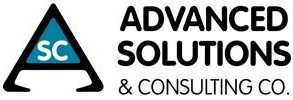Technology is constantly evolving, transforming businesses in every industry. In a landscape where new ideas and discoveries are constantly on the horizon, there is no room for those slow to adapt. If your business still relies on legacy software for its ERP needs, it might be time for you to consider upgrading to a Postmodern ERP.
Postmodern ERP is a technology-based management strategy that provides advanced automation and integration of front- and back-end systems. Postmodern ERPs like Acumatica’s Cloud-based ERP focus on a two-pronged approach to ERP: administrative and operational. This allows for an optimal balance of vendor-delivered integration, flexibility, and agility.
Take note that there is no universal ERP solution that will work for every organization. The strategy you implement should be carefully planned to utilize postmodern ERP technologies in ways that fulfill the specific needs of your business without giving up integration, control, and agility. Nobody knows your company better than you.
A Little More About Postmodern ERP
As the name implies, “postmodern” ERP is the forefront of ERP strategy — an evolutionary step beyond what we know as “modern” ERP. Postmodern ERP solutions, like Acumatica’s cloud-based ERP, integrate at least two different strategies (sometimes using technologies from different vendors) to maximize company efficiency without sacrificing flexibility. These strategies can be split into two categories: administrative and operational.
Administrative strategies are designed to optimize administrative processes including procurement, contracts, human resource management, and financials. Occasionally, specialized processes that are specific to an industry can be categorized as administrative processes, but the core of such strategies is on administration-related functions.
Operational strategies focus primarily on operational processes such as order and inventory management, handling of the supply chain, and manufacturing. Companies selling a product (or several products) will find the discovery and elimination of operational inefficiencies is paramount to maximizing customer satisfaction, streamlining the order process, and proper distribution of human resources.
Designing the Right Postmodern ERP Strategy for Your Company…
If after reading this, you’ve decided that your company might need to replace its outdated legacy ERP for the flexibility of a postmodern ERP — take a breath! Replacing the technology that supports the management of your entire business is no small task! Here is a list of the steps you should take to ensure your transition is as successful as possible:
- Write down the specific needs of your business, what you hope to achieve with your new strategy and the goals of your business going forward.
- Carefully evaluate the available postmodern ERP solutions available on the market. Take your time on this step. The solution you go with should fulfill the needs of your business with excellent customer service and — if possible — worker training to get your team up to speed.
- Ask yourself how each part of your company will be affected by the new technology and deliberate how you can ease the transition process.
- Implement your chosen postmodern ERP solution.
- Analyze the list of extensions that are packaged with your postmodern ERP. Cut out the fat — if your business doesn’t need it, get rid of it.
- Keep in touch with your partners and vendors to help you set feasible goals and prepare for any software updates.

